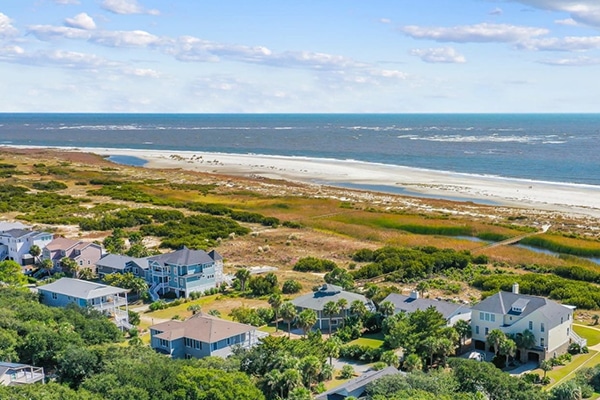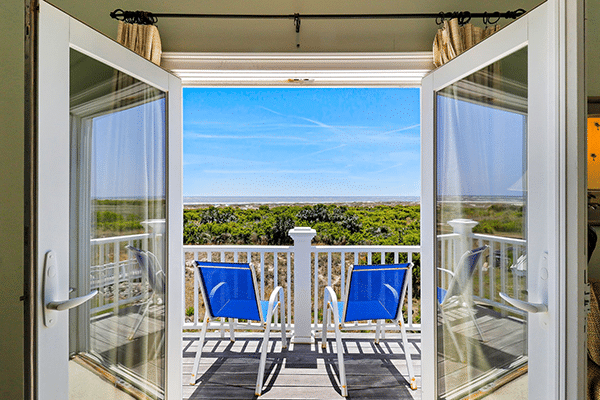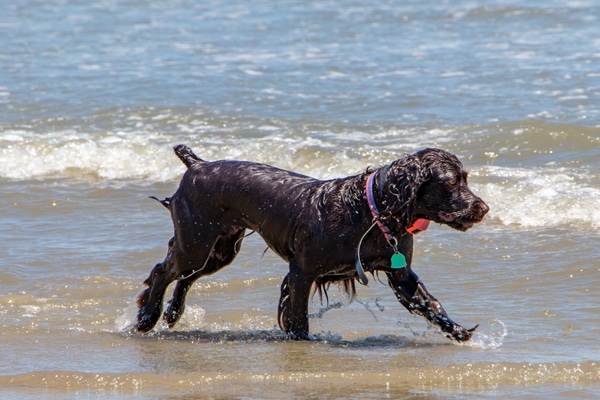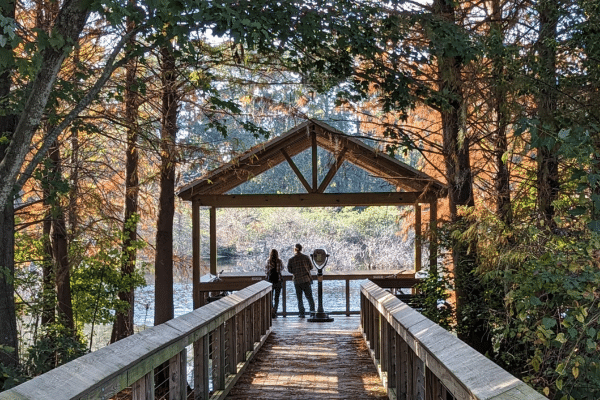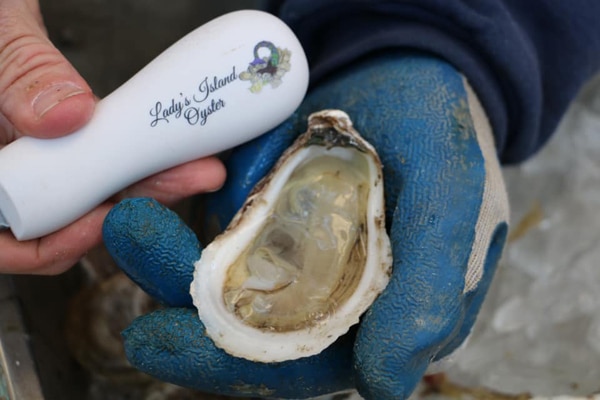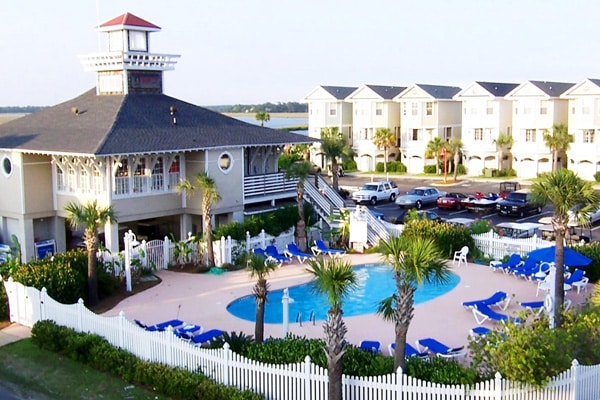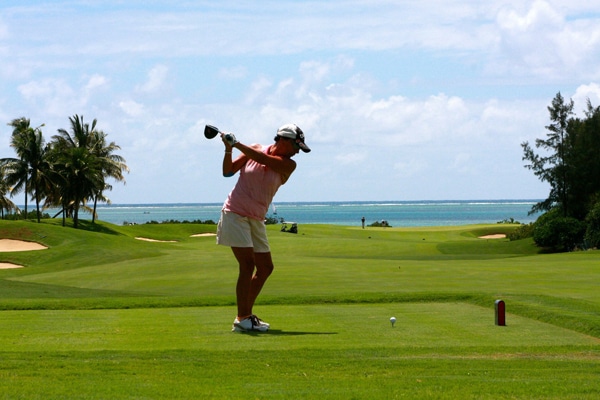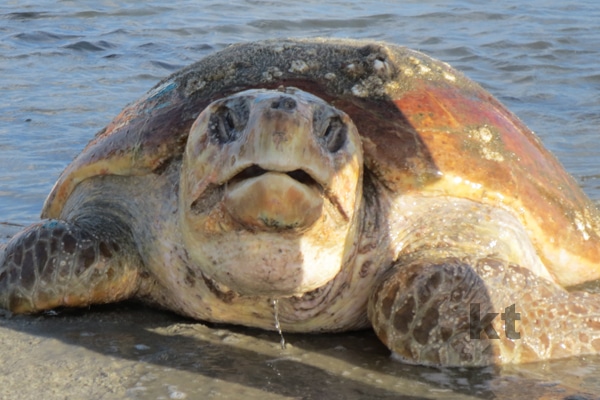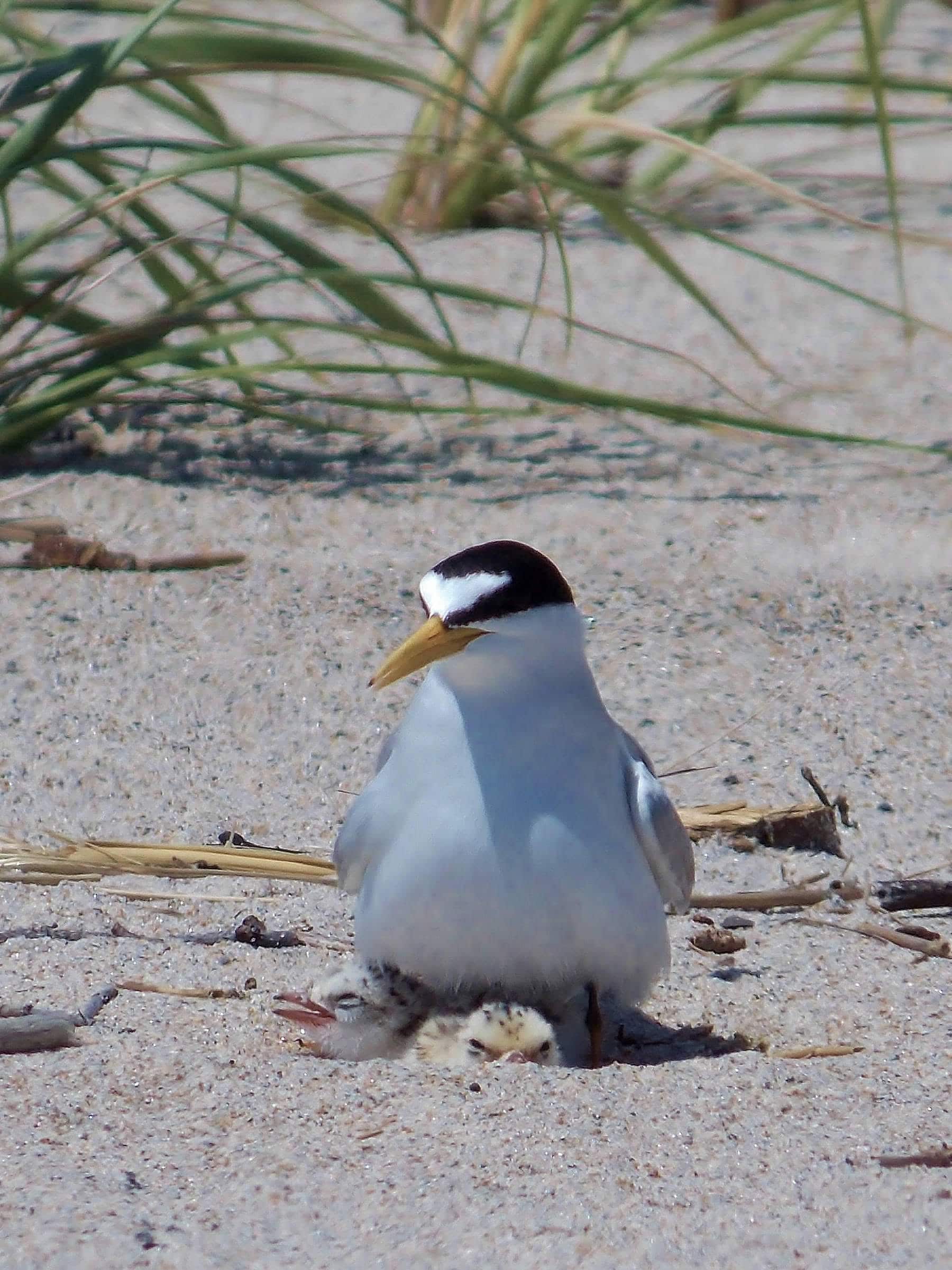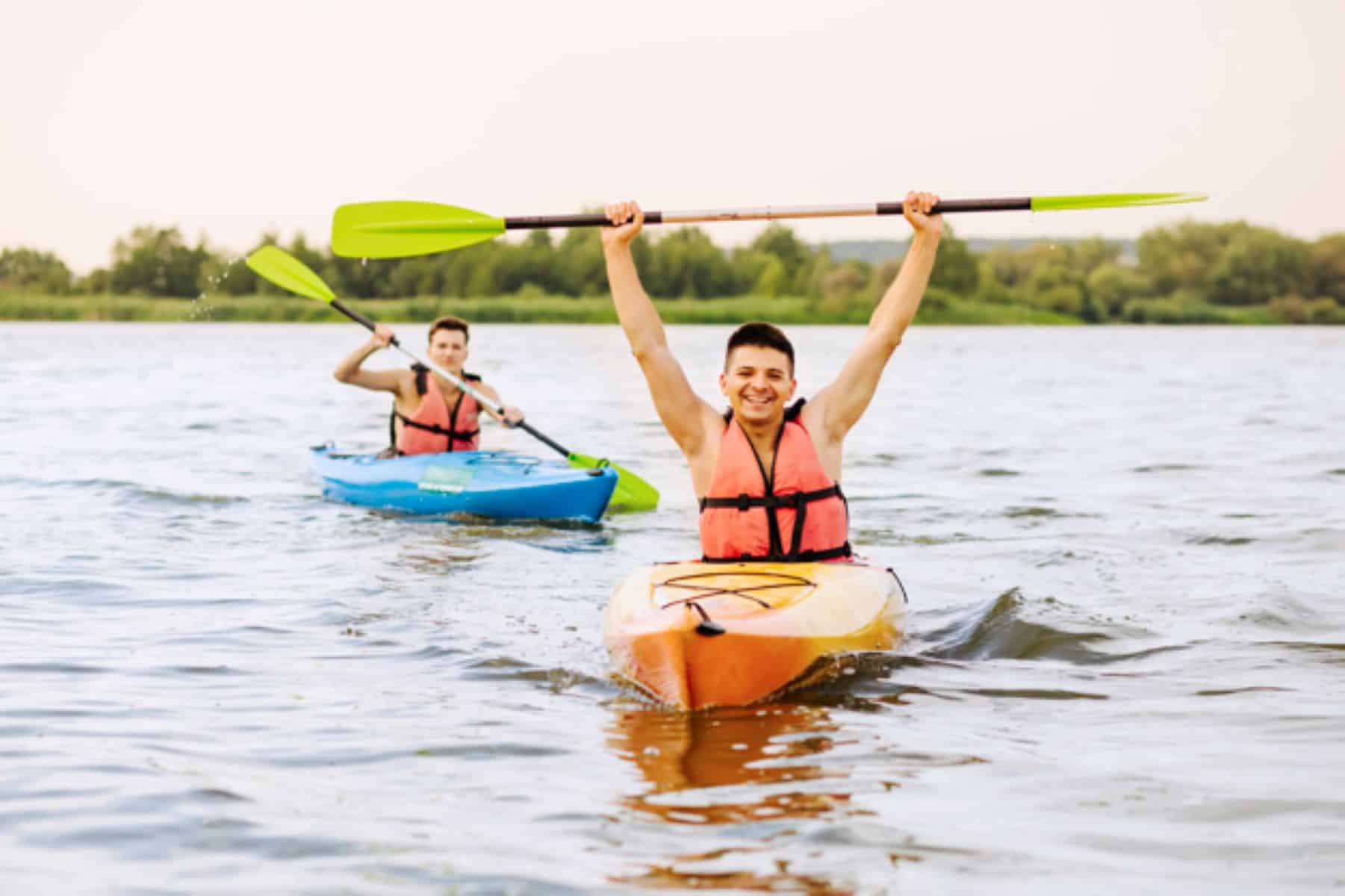Pritchards Island
Amazing Uninhabited Island
Pritchards Island is just southwest of Fripp and is only accessible by boat. This uninhabited island is owned by the University of South Carolina which conducts research on the island and welcomes daily visitors who enjoy strolling along the beaches and enjoying the barrier island's wildlife and tranquility.
Atlanta businessman Philip Rhodes donated the 1,600 acre island to the University of South Carolina in 1983 with the condition it not be developed commercially but rather used for coastal research. Students would stay in the "old stilt house", the Rhodes Research Center, while studying the ecosystems on the island and managing the preservation of the loggerhead sea turtles that nest on the island. The island is still managed by USCB and is used for education, conservation and research purposes by the University, other state institutions, and the general public.
In October of 2022, the abandoned research lab was removed, section by section, and hauled off on a barge.
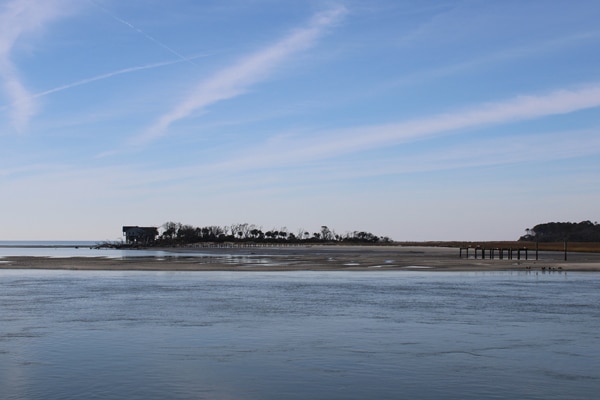
For several years, the Beaufort County Arts Council collaborated with USCB to hold an annual artist retreat on Pritchards. Each artist was required to provide a piece of art that became the Pritchards Island Collection.
That collection now hangs in the library at the Hilton Head Gateway campus. (Source: Island Packet 2015)
If you're looking for an adventure, visit Pritchards by kayak or canoe. The Fripp Island Resort offers guided canoe trips that launch off the beach behind the Cabana Club. It's a great way to safely navigate the swift current that runs through Skull Inlet and learn more about the barrier islands. Contact the Activity Center for more information and reservations.
If you're ready to head out on your own, you can check tides and head over in your kayak or canoe. Single and tandem kayaks are also available to rent at Island Excursions. Once you get to Pritchards, you'll enjoy the peace and quiet of the island while strolling, shelling and exploring.
One of Beaufort County's most nested beaches, Pritchards Island is host to Loggerhead Sea Turtles between May and October. A group of dedicated volunteers patrol the island during nesting season to protect, mark and even relocate nests when necessary. Learn more about loggerheads - they're truly amazing!
Pritchards Island is host to both shorebirds and seabirds throughout most of the year - in the summer for nesting, and as a rest and refuel layover during their epic spring and fall migrations.
Nests are laid in shallow scrapes in the sand that blend in very well to their surroundings. While raising their young in the summer, it is imperative that adult birds keep eggs and chicks shaded to prevent predation and overheating in the summer sun, like the Least Tern is doing in this photo.
With North American shorebird and seabird populations in steep decline from habitat loss, predation and human disturbance, every piece of natural habitat remaining is critical for their survival. Help us protect these birds while enjoying the beach by keeping these actions in mind:
- Walk around flocks of birds, not through them, so they can rest and feed
- Respect signage on the beach indicating where birds are nesting and/or resting
- Leash your dog near birds, because even friendly dogs look like predators to them
There's lots to learn about birds in the Lowcountry - there are hundreds of different species to be found. Thank you for helping to protect our local wildlife!
Why do Black Skimmers have these strange, uneven bills? For a very specific purpose: when these coastal birds fly low, with their long lower mandibles plowing the water, they’ll snap the bill shut once they contact a fish.
A Black Skimmer with its beak wide open in Wachapreague, Virginia. 📷: Joshua Galicki (galicki_photography)/Audubon Photography Awards

Did you know February 15 marked the beginning of the breeding season for shorebirds in Florida?
Nesting sites in the eastern Florida Panhandle have been busy setting up string fencing, often called symbolic fencing, to protect dune and beach ecosystems from being trampled and eroded. But there are plenty of ways that you can help #ShareTheShore the next time you’re out on the state`s beaches this breeding season—remember to follow these tips:
🚫 Avoid feeding wildlife
🗑️ Dispose of trash properly
🚗 Avoid driving on beaches
🐕 Keep dogs on leashes or off beaches when they’re not permitted
🐦 Give shorebirds their space and avoid flushing them
Find out more about the ongoing efforts to ensure that Florida’s shorebirds have a safe breeding season by tapping the link in our bio.
A Snowy Plover peeks out while camouflaged on the shore. 📷: Veryl Witmer/Audubon Photography Awards

Heading out to the beach this #MemorialDay weekend? ☀ 🏖️ Don`t forget to look out for our beloved coastal birds and always remember to #ShareTheShore while they nest and rest on our beaches!
You can help keep them safe by giving them at least 100 feet of space. Tap the link in our bio to learn more tips about how to protect our coastal feathered friends. 🐦✨

Daddy let me in…..wait no I want to run! 🖤🤍
Imani and one of his babies.
#pipingplover #plover #birds #shorebirds #sharetheshore #montrose #birding #birdphotography #birdpics #birdlovers #beach #endangeredspecies #chicago #nature #naturelovers #naturephotography #nikon #nikonphotography #nikonnature #nikonoutdoors
chicagopipingplovers

Heading to the beach this summer? 🏖️ Birds that nest on beaches and other coastal habitats face many challenges, like human development, storms, and sea-level rise.
That`s why it`s so important to help protect coastal birds by giving them the space they need to nest, rest, and feed. And now you can inspire others to #ShareTheShore with our merch, available for a limited time only.
Tap the link in our bio to choose your favorite product—from tote bags to towels and more—and all purchases will support Audubon’s conservation work.
1️⃣ A Laughing Gull peers at a Share the Shore tote bag.
2️⃣ A Share the Shore beach towel on the sand.
3️⃣ A Share the Shore tote bag hanging on rocks on the beach
All 📷: Nancy Borowick (nancyborowick)

Piping Plover chicks have been hatching throughout the Great Lakes region this summer, ushering in a particularly vulnerable time for these endangered shorebirds. 🐣
Adult Piping Plovers and their chicks face daily dangers, including disturbance from beachgoers, predators, and dogs off leashes. While many nesting locations are monitored frequently, the birds can’t be watched 24/7, which means it’s up to beachgoers to be aware of any plovers nesting nearby and the importance of giving them space to nest and rest.
That’s why AudubonGreatLakes and partners recently launched an education and outreach program to reach tourists and other new audiences in the area and encourage them to protect these shorebirds.
Tap the link in our bio to learn more about how this program aims to help beachgoers to #ShareTheShore!
A Great Lakes Piping Plover and its chick on the beach. 📷: John Doskoch

Wilson`s Plovers are slightly larger than several of the small plovers in the family, and they have a more southerly distribution, living on beaches along the southern Atlantic and Gulf Coasts.
Don’t forget to #ShareTheShore with this adorable plover and our other beloved coastal birds if you’re heading to the beach this summer! You can help keep them safe by giving them at least 100 feet of space so they can nest and rest. 💖
A Wilson`s Plover parent stays close to its chick on the beach. 📷: Jean Hall/Audubon Photography Awards

We`re calling on beachgoers everywhere to make beaches safer for birds by avoiding their nesting areas this #MemorialDay weekend and throughout the summer. 🏖️
If you spent the weekend along Florida`s beaches, you might have seen Audubon_FL’s bird stewards out in full force at certain locations where people and beach-nesting birds commingle. These important ambassadors for nature help visitors learn about coastal birds to better understand what`s happening inside posted areas.
What else can you do to help #ShareTheShore with these nesting birds at the beach? Tap the link in our bio to find out!
Black Skimmers, including chicks, gather on the beach. 📷: Douglas DeFelice/Audubon Photography Awards

While many shorebirds have wide distributions, the piping plover is a North American specialty, barely extending into Mexico in winter.
But these birds are now considered endangered or threatened species in all parts of their range as many of their nesting areas are subject to human disturbance and other threats.
To help protect Piping Plovers and other shorebirds and wildlife, it’s critical for people to #ShareTheShore.
A video of a Piping Plover stomping its feet on the sand. 📹: Sean Graesser (gourmetbiologist)

The ocean asks for nothing but those who stand by her shores gradually attune themselves to her rhythm.
- Charles Dickens
.
.
09.09.20
American oystercatchers on the beaches of the Rockaways in Queens #NewYorkCity
.
Last Sunday was #WorldShorebirdsDay so on this #WildlifeWednesday I’ll spotlight the American oystercatcher, a boldly patterned shorebird w red-yellow eyes and a vivid red-orange bill, it survives almost exclusively on shellfish.
.
Every summer, a lot of these oystercatchers and other shorebirds nest on the Rockaways. Was excited to see an oystercatcher chick during one of my visits! Swipe to see it!
.
I also came across the eggs of 6U and 7U, two banded oystercatchers that has returned to nest in the Rockaways for several years now. This year they have three eggs which haven’t hatch yet when I was there last July.
.
To protect nesting shorebirds, everyone is encouraged to #sharetheshore 🐣
.
#SeeYourCity

